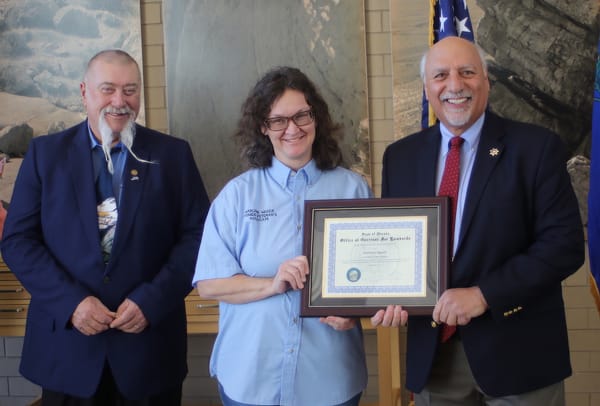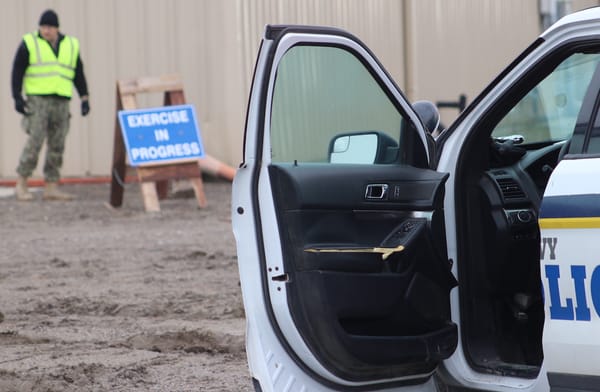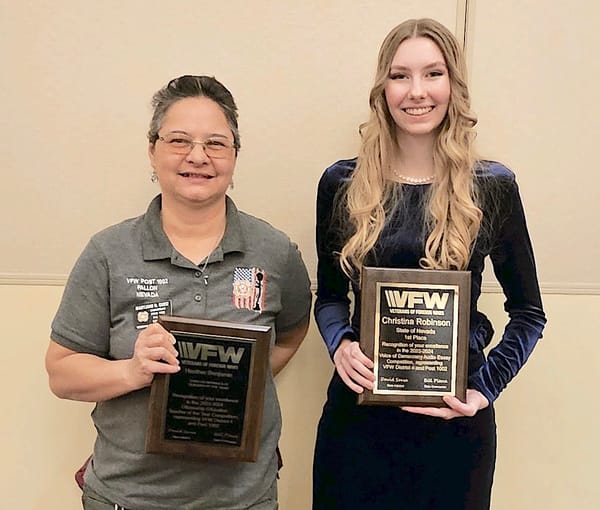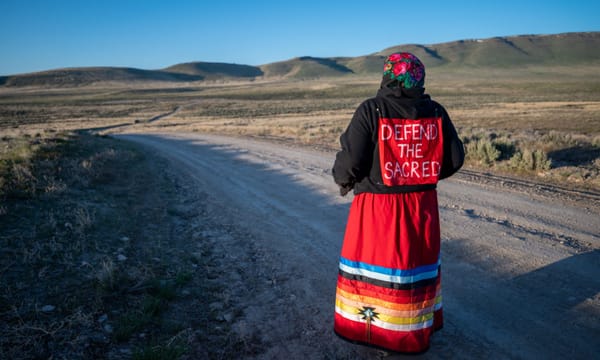Experiment Station projects serve Nevadans at facilities throughout state, part 4
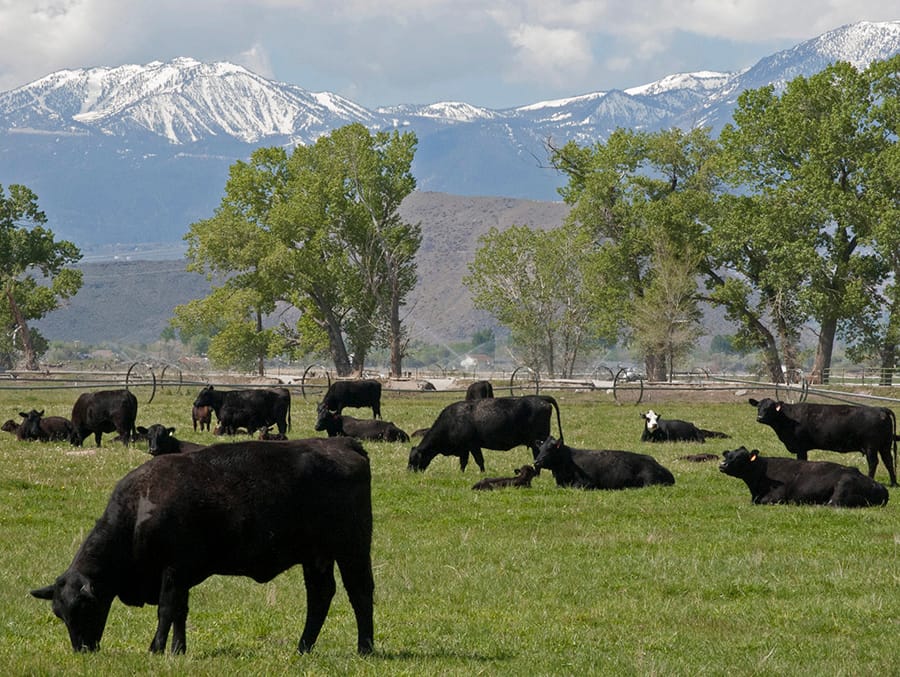
Submitted by University of Nevada, Reno
RENO–This week the University of Nevada, Reno is touting the diverse research being conducted at its various Experiment Station facilities throughout the state. The research unit is a part of the University’s College of Agriculture, Biotechnology & Natural Resources. It maintains a network of field stations throughout the state, providing researchers different environments where they can experiment on a larger scale while supporting the needs of the nearby communities.
“I think it’s really an exciting time for the Experiment Station, as our research is expanding throughout the state and our faculty are heavily engaged in projects that will serve to help our stakeholders in all areas of Nevada,” Chris Pritsos, director of the Experiment Station, said. “We’re really expanding our research capacity throughout the state. Our faculty have gone out and successfully competed for grants to support their work, and we are making significant impacts, whether it be in the area of water, agriculture production, environmental science or the cattle industry.”
Nevada State News, this week, is sharing details the University has provided on some of the projects occurring at the different field stations, including those done in partnership with UNR’s Extension and other partners. This is the fourth of a five-part series.
Fallon Research Center
The Fallon Research Center is located in Churchill County and houses the U.S. Department of Agriculture Natural Resources Conservation Service’s Great Basin Plant Materials Center. This 160-acre farm is the third station involved with the sorghum and irrigation project, with researchers testing how flood irrigation impacts sorghum at the different irrigation levels.
The station is also home to several other sorghum projects, including a new project investigating herbicide-resistant sorghum hybrids, many of which were commercialized this spring. The team will assess the varieties for how well they tolerate the herbicides when being watered using flood irrigation.
Another project is looking at how various sorghum varieties grow in different Nevada soils. Fallon has some sodium-rich soils with high salinity and alkalinity, characteristics that affect how much water is available for the plant. Yerka, Washington-Allen and Walia, along with graduate student Erin Smith (animal and rangeland science) and the Plant Materials Center’s Chris Bernau and Mat Humphrey, are using the same remote-sensing technology to look at how sorghum’s roots interact with the soil and how these interactions impact whole-plant growth and development.
“Our work is aimed to help farmers make better decisions about what to plant, about which crops grow best on their specific soils, so they can have a more sustainable operation,” Yerka said.
In addition, Walia is conducting research on chickpeas, dry beans, soybeans, teff for forage and grain production, and forage soybeans, which are crops that have garnered interest from local producers.
Juan Solomon, associate professor of Agriculture, Veterinary & Rangeland Sciences, and Barrios-Masias are beginning work with a local company to test the best growing conditions for several varieties of hemp for both fiber and seed production. Hemp production is rapidly expanding throughout the U.S. and may provide farmers with another alternative low-water crop. Initial results indicate Nevada has a climate well-suited for growing some hemp varieties.
Solomon is also studying the use of silage sorghum to provide feed for dairy operations in Nevada. Silage is what’s left after the harvested crop, such as corn, alfalfa or soybeans, is fermented and stored. Dairy operations rely on silage to feed their cattle throughout the year, and if Nevada operations cannot get silage with enough protein and energy locally, then they buy from out of state.
For producers growing alfalfa, the crop is harvested three to four times throughout the year, with the third or fourth cut being a valuable option for mixed silage. However, sorghum silage by itself has low levels of protein. Certain sorghum crops are ready to harvest when alfalfa is ready for its third cut, so when the two are mixed together, the alfalfa increases the protein in the resulting silage.
“The goal is to find alternative feed crops that use less water and fertilizer than more traditional silage crops, such as corn,” Solomon explained. “By incorporating the third-cut alfalfa into the sorghum, we boost the protein value of the silage to meet the demands of the dairy industry.”
Sorghum can be grown together with soybeans and cowpeas as well, and when the plants are ready to harvest for silage, the soybeans and cowpeas enhance the protein value.
Main Station Field Lab
Solomon is also growing silage sorghum at the Main Station Field Lab, more than 800 acres located in east Reno. In a separate project, he is investigating alternative methods for growing plants in grazing pastures for livestock. Traditionally, producers grow a mix of forage grasses with legumes, which are broadleaf plants that have higher nutritional value than grasses and produce nitrogen that the grasses use. The problem is cattle prefer eating the legumes before the grass, which throws off the nitrogen balance and uses up the legumes within the first two of the five years the mixture is intended to last.
Solomon is investigating using a special system approach, where the grasses and legumes are grown next to each other in a patchwork pattern, rather than mixed together. Such a pasture would allow animals to easily choose which component they want to graze, the legumes and grasses can maximize their growth without having to compete for growth resources, and it’s easier to control grass weeds in the legume patches and broadleaf weeds in the grass patches. As for the nitrogen, producers would only have to fertilize the grass in half of the pasture, rather than the whole pasture. In addition, the crops can be rotated every five or six years, moving the grass into the legume areas and the legumes into the grass areas. Preliminary results of the study show greater cattle daily weight gain with the special system compared to the traditional mixed pasture.
In another project at Main Station, Assistant Professor of Beef Cattle Production Mozart Fonseca is leading a team in researching the use of brewery waste as cattle feed. Fonseca, along with Amilton de Mello, assistant professor of meat science, analyzed the different and unique nutrient profiles from wastes collected from breweries in Reno and Carson City. They discovered that wastes from different craft brews can have different effects on the cattle meat, and they want to know if feeding specific brew waste to cattle can create “craft meat” in the same way that specific grapes can create specific wine. In addition, Fonseca and de Mello are working with Staci Emm, professor and Extension educator in Mineral County, and Bishop to evaluate the economic feasibility of using the spent grains to supplement on-farm resources and help sustain farming operations when available feed is limited. Emm and Bishop will also be establishing an advisory group for the project and are educating producers and craft brewers about the possibility of using the waste as feed.
“We are creating the environment so producers can communicate with the community,” Fonseca said. “The idea is the beer crafter sells burgers and steaks branded by their beers so we can improve overall local industry sustainability with turning waste into a grow-local product.”
Fonseca and de Mello are also investigating several different ways to help cattle producers maintain their herd and keep their production operations economically viable when food and water for livestock are limited. Examples include testing supplements to see if livestock will voluntarily drink less water, evaluating the offspring of cattle who lost weight then regained it quickly because of fluctuations in food availability due to events such as wildfires or drought, and researching if animals’ drinking behavior may affect how much and where they choose to graze.
“Many new hypotheses are being explored right now,” de Mello said. “We used to stick with what we knew, but the technology allows us to go deeper into things we were not able to do before.”
Source: UNR


